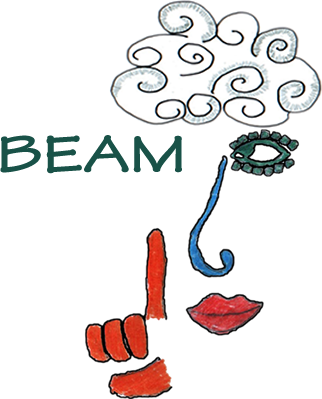
Why do some research studies have an upper age limit? Dr Emma Gowen
Volunteers required for study on perception
Inclusion criteria
- Be diagnosed with autism
- Aged between 18 and 45 years
I decided to write this blog post after several email conversations with people who asked why our autism studies often have an upper age limit of 45 years. Let’s start with a little context first. I am in my forties so would also be excluded from many of my own studies. I also have Multiple Sclerosis so know what its like to live with a long-term condition, where other people can seem to exclude or side-line you. My overall position on the question of age is that we should be researching autism across the lifespan, but would like to convey in this blog that there are some valid scientific and practical reasons why studies (including our own) focus on younger adults.
First, age brings variability to an already variable population. Let’s think of a study where you want to understand how motor coordination is different between autistic and non-autistic individuals. You could test a group of autistic and non-autistic people who are 18+. The difficulty here is that as we age, motor coordination changes his means that there will be a lot of variability in the motor coordination of both the autistic and non-autistic participants and this extra “noise” could drown out any true group differences.
Second, you could separate out the older and younger participants so that you are only comparing like with like – autistic and non-autistic younger adults and autistic and non-autistic older adults. However, the problem with this comes down (rather mundanely) to time and cost. In order to perform robust studies that are likely to be repeatable (i.e. other researchers could run your methods and come out with a similar finding) you often need large participant numbers. This is something that has become particularly topical in light of the current “reproducibility crisis” (Baker, 2016). Here, studies are not replicable because of a number of poor scientific approaches, including small numbers of participants. Therefore, you would need a large group of autistic and non-autistic younger participants as well as a large group of autistic and non-autistic older adults. To put a monetary slant on this, a recent 4 year grant that we submitted investigating perception in 80 autistic and 80 non-autistic people came in at just under 1 Million pounds. If we had wanted to add an older age group, this would have taken us over the 1 Million pound upper limit set by the funders. It would also take double the amount of time. Therefore, for many funders and student researchers (thinking of PhD students) the time and costs implications of running studies in both older and younger adult groups is not feasible.
Third, I can hear the reader asking “Why not just focus the study on an older group”? This is a good way forward, but unfortunately in autism research we often don’t know enough about the younger adult group. In my field of perception and motor control, there are many studies in younger autistic adults, but these show ambiguous findings often due to using small participant numbers and the use of slightly different tasks. Therefore, we need to concentrate on younger (and slightly less variable) autistic adults to gain a consistent picture before understanding how perception or motor control might be further impacted by age.
Having said this, in direct response to those email discussions about the age issue the BEAM lab has been moving towards studies that include older autistic adults. For example, we have just finished collecting data for a study looking at Optometric issues in autistic adults of all ages well as a study asking older autistic adults about their experience of ageing and support. These studies have been directly informed by conversations with autistic people about the need to include older autistic adults and we welcome challenges and questions as they help us plan future work. However, it remains that for many studies there are valid scientific, cost and time rationale for having an upper age limit. Our hope is that with continued discussion with autistic people around the need for including older adults in research along with the move towards better quality research studies in younger adults that we will get to a point where many more studies can say “Inclusion criteria: 18+”
Baker, M. (2016) 1,500 scientists lift the lid on reproducibility. Nature 533, 452–454. https://www.nature.com/articles/533452a#change-history
Maes. C et al. (2017). Two hands, one brain, and aging. Neuroscience & Biobehavioral Reviews. 75, 234-256. https://www.semanticscholar.org/paper/Two-hands%2C-one-brain%2C-and-aging-Maes-Gooijers/657a197d4eeb65a5a0350695b493d79a02f0d0c1
Krehbiel LM, Kang N, Cauraugh JH (2017). Age-related differences in bimanual movements: A systematic review and meta-analysis. Exp Gerontol. Nov;98:199-206. doi: 10.1016/j.exger.2017.09.001. https://pubmed.ncbi.nlm.nih.gov/28890358/
Poirier, G., Ohayon, A., Juranville, A., Mourey, F., & Gaveau, J. (2021). Deterioration, Compensation and Motor Control Processes in Healthy Aging, Mild Cognitive Impairment and Alzheimer’s Disease. Geriatrics (Basel, Switzerland), 6(1), 33. https://www.ncbi.nlm.nih.gov/pmc/articles/PMC8006018/






0 Comments